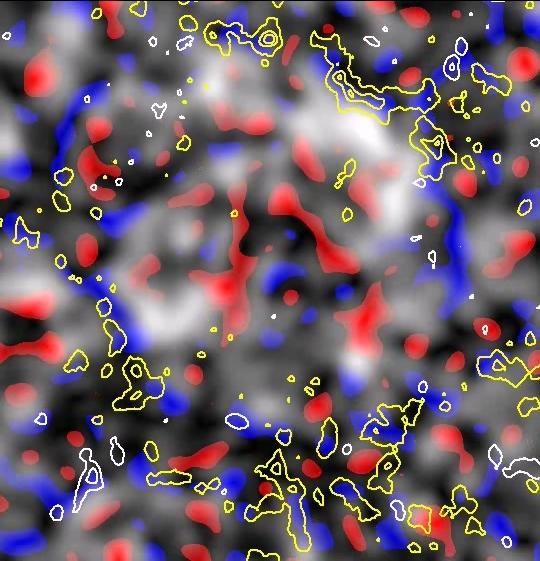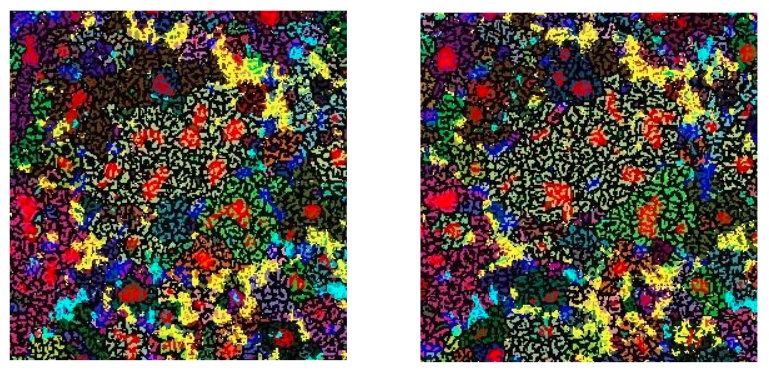Diffusion of the magnetic field by families of granules on the surface of the sun
The sun by its proximity is a unique laboratory whose physical conditions are difficult to reproduce on Earth. The thermodynamic, radiative, magnetic parameters lay within unusual amplitude ranges. The interactions between the magnetic field and the plasma, on unrealistic time and space scales in laboratory, are at the origin of solar activity. The most visible is represented by sunspots emerging at the surface of the sun with a cyclicity of about 11 years. The other component, less known but whose physical significance is predominant (10,000 times more magnetic flux) is the magnetic network spread across the sun.

This network whose characteristic scale is of the order of 20 000 to 30 000 km is generally described as being connected to the “supergranulary” scale. Despite fifty years of efforts to associate this supergranulation to a convective scale, no hard evidence has been provided in this regard. A new approach to this phenomenon has just been proposed by a team of IRAP and LESIA in collaboration with the Lockheed Martin (Palo Alto, USA).
Using families of recurring explosive granules, the authors showed that these structures could generate surface movements at dimensions much greater than the granulary scale (1000 km). These surface velocity fields allow the transport of the magnetic elements of a size of 100 to 200 km from within supergranules to the magnetic array. In addition, they also seem to help in the formation of large structures in the network by deforming it when opposite velocity fields are absent.

Competition between the various families of recurrent explosive granules appears as a driving force of the movements and organization of the magnetic field on the surface of the sun. Photosphere is a highly turbulent environment where explosive granules families emphasize long distance correlations structuring the magnetic field. The comparison with large-scale simulations is underway to better characterize the underlying physics to the emergence of these structures.
This work opens a new way to the understanding of solar magnetism and its evolution over the cycle. In the longer term, these results will help to develop more realistic models of diffusion mechanisms of the magnetic field on the surface of stars and especially those of solar type.
Further Resources
- Publication: “Relation between trees of fragmenting granules and supergranulation evolution”, par Roudier, Th(1).; Malherbe, J. M(2).; Rieutord, M.(1); Frank, Z.(3), Astronomy and astrophysics Avril 2016; DOI: 10.1051/0004-6361/201628111, http://arxiv.org/pdf/1604.04118v1.pdf
- (1) Institut de Recherche en Astrophysique et Planétologie, Université de Toulouse, CNRS, 14 avenue Edouard Belin, 31400 Toulouse, France
- (2) LESIA, Observatoire de Paris, Section de Meudon, 92195 Meudon, France
- (3) Lockheed Martin Advance Technology Center, Palo Alto, CA, USA
- Vidéos : http://www.lesia.obspm.fr/perso/jean-marie-malherbe/Hinode2007/hinode2007.html
IRAP Contact
- Thierry Roudier, thierry.roudier@irap.omp.eu






